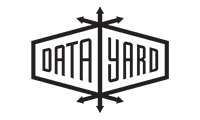Introduction
DataYard has been providing internet access and dedicated WAN services for years, but did you know that as a CLEC, or competitive local exchange carrier, we are one of less than 100 such carriers in Ohio?
There’s a lot of mystery behind what a CLEC is and the relationship that exists between them and the ILECs such as AT&T, Verizon, and other incumbent local exchange carriers. The ILEC is a telephone company made up of one or more Regional Bell Operating Companies, or Baby Bells, that remain since the 1984 breakup of Bell Systems, and maintain and operate local wiring exchanges in their respective regions.
This post aims to demystify some of that relationship, and explain some of the technologies that the CLEC status allows us to deliver to our customers.
CLEC Landscape Summary
So what is a CLEC? CLECs are always in competition with the local incumbent carrier – they offer an alternative to ILECs through a different set of regulations. Where ILECs are required to provide a certain set of services to the public, CLECs have the right to compete in the same market using access to the same facilities and infrastructure.
Practically speaking, CLECs are given rights to place hardware in the local exchange facilities of their market, owned and operated by the incumbent carrier. CLECs are also granted rights to access individual copper loops as an unbundled network element – that is, a single telecommunications network component, required to be offered by ILECs to competitors at near-cost rates.
The local exchange, or central office, is a facility in which all of the nearby residential and business copper infrastructure terminates. These facilities have stood for years delivering a variety of services (voice, DSL/T1, etc.) over copper infrastructure. For a more in depth look at the rights provided to CLECs, have a look at the Telecommunications Act of 1996 itself, which defined most of the regulation dictating the ILEC & CLEC relationship.
This agreement allows CLECs to offer many of the same services provided by ILECs to end users, using their own hardware, networks, and value add. Despite the competition enabled through the telecommunications act, many CLECs have crumbled or been acquired by the larger LECs over the last decade. Most that have survived have done so by focusing on business customers, and diversifying into cloud and managed services. DataYard has used its CLEC status to supplement and add value to its managed cloud offerings with a variety of xDSL (modern SHDSL, ADSL, and VDSL technologies), T1, and Ethernet services.
xDSL and Ethernet in the First Mile
While a market for TDM based T1, T3/DS3 & Sonet services still exists, in recent years the focus has shifted heavily towards Ethernet based services delivered to the first mile. These Ethernet in the First Mile or EFM services are often delivered using a variety of xDSL flavors by CLECs (including DataYard) for flexible, reliable, and high bandwidth applications at small to medium sized business. Many users associate the term DSL with a standard residential ADSL modem, with marginal speeds and reliability, but the technology behind modern SHDSL, ADSL2+, and VDSL2 connections has made these Ethernet based services very attractive to businesses. Consider the following speeds achievable using a single copper pair (and more with circuit bonding) with current xDSL technologies when evaluating Ethernet and Metro Ethernet solutions against fiber and wireless solutions.
- SHDSL – 5.6Mbps download and upload
- ADSL2+ (Annex M) – 24Mbps download, 3mbps upload
- VDSL2 (Common 17a Profile) – 100Mbps download and upload
Like all implementations of DSL, these speeds are achieved with a method of modulating bits into a pattern of tones on the analog circuit, to be picked up on the remote end and converted back into bits. Because of that implementation, all xDSL speeds are very dependent on distance from the exchange where the CLEC or ILEC terminates its copper circuits.
While ILECs have been slow to adopt xDSL outside of the traditional ADSL model in the US, CLECs and much of Europe, Asia, and Australia make heavy use of high bandwidth DSL.
Conclusion
While fiber based solutions are going to become more and more common in coming years, copper based Ethernet services are going to continue to deliver a price competitive solution. With standards such as the new G.Fast ITU G.9701 delivering up to 1Gbps over existing copper, we should expect continued growth and offerings from CLECs and ILECs alike. DataYard has been delivering xDSL based, high bandwidth and highly available Ethernet services to businesses for years, standardizing on industry leading Adtran as our vendor of choice.



